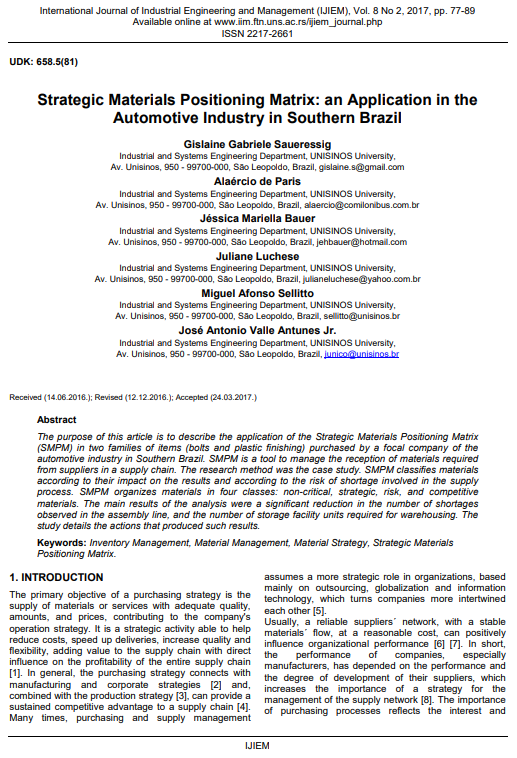Strategic Materials Positioning Matrix: An Application in the Automotive Industry in Southern Brazil

Published 2017-06-30
abstract views: 35 // FULL TEXT ARTICLE (PDF): 0
Keywords
- Inventory Management,
- Material Management,
- Material Strategy,
- Strategic Materials Positioning Matrix
How to Cite
Copyright (c) 2023 International Journal of Industrial Engineering and Management

This work is licensed under a Creative Commons Attribution 4.0 International License.
Abstract
The purpose of this article is to describe the application of the Strategic Materials Positioning Matrix (SMPM) in two families of items (bolts and plastic finishing) purchased by a focal company of the automotive industry in Southern Brazil. SMPM is a tool to manage the reception of materials required from suppliers in a supply chain. The research method was the case study. SMPM classifies materials according to their impact on the results and according to the risk of shortage involved in the supply process. SMPM organizes materials in four classes: non-critical, strategic, risk, and competitive materials. The main results of the analysis were a significant reduction in the number of shortages observed in the assembly line, and the number of storage facility units required for warehousing. The study details the actions that produced such results.
Article history: Received (14.06.2016); Revised (12.12.2016); Accepted (24.03.2017)

